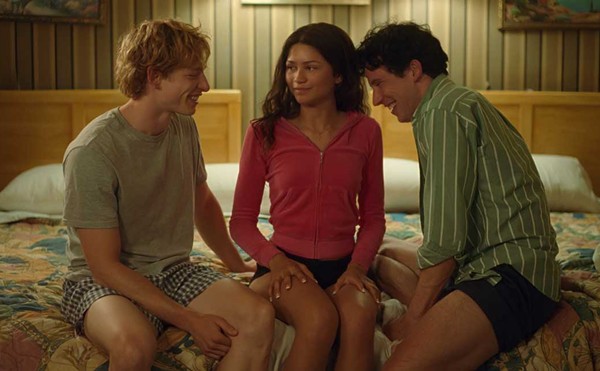Following a fall tour that took her from New York to San Francisco, Terry Blackhawk will bring her new award-winning book, Escape Artist, back to her hometown in the new year. The Detroit poet plans to read at local bookstores, including Book Beat in Oak Park and Borders in Rochester Hills.
Even though the title, Escape Artist, evokes images of slipping away into the night, the writing itself is more about tuning in and being present, wherever one may happen to be. The book’s many references to departures and images of birds work to define the functions of boundaries as much as they call forth images of flight.
Blackhawk has a remarkable curiosity about the state and position of things. She steps freely into scenes of her own poems to discover their qualities and coordinates. The first three sections of her book are experiments in juxtaposition and a blurring of lines, creating lucid abstractions sort of like a dream.
Reading Blackhawk’s book, one discerns the author as one might sense a stranger entering a dimly lit room. Was it the barely audible footsteps, the shadows or the faint whisper of breath that made the presence known? When exploring the ethereal space between objects in nature and visual art, for example, the poet frames the imagery in first-person language that exposes layers of thought behind the thinker and the voice.
While this layering is often found in the work of other poets, it’s especially striking in Blackhawk’s poetry, which blends the observer into the subject itself. In the third stanza of “Between the Birds and Rauschenberg,” she writes:
I went to Ecuador to lose my way
In the language of birds and native magic.
Scarcely home again, touring this exhibit,
What’s present and what’s after-image
Seem to overlap. Tropic mnemonics pop up
Their heads, scuttle out from collages
Escape Artist is filled with the astute observations of a traveler moving through time and place. Through the power of language and a truth in her storytelling, Blackhawk’s verses are true-to-life records painted with sensitive, imaginative awareness. Her words move in circular motion, curving thoughts back to their starting points. But there are also some interesting reversals that showcase the intricacy of the author’s vision.
In the poem “Capture” Blackhawk lifts her eyeglasses to stare into the eyes of an owl, but is then caught by the bird’s gaze, the author looming “huge and human.” While bird-watching, she sees herself.
Later in “Mirror Surface,” she considers Van Gogh and Monet spliced with a nature scene in which she longs to remain “lost in the raveling scrawl, the brainy shapes of trees.” Again, Blackhawk explores reflection, creating trees that seem capable of considering her as she considers them. In this way she enters her poems fully, even using her own name at the end of “At the Victoria and Albert Museum”: “Fellow travelers, make the most of artifacts and time/before your form runs out, like Tourist Blackhawk’s linking song.”
The title poem features a crow dangling by its left foot from an electrical wire:
Surely dead, the dank, bone-filled rag of it — until it swiveled upright, flapped, then flew, glad,
I suppose, to have looked at the world in a new way,
to leave behind a dummy’s point of view.
The fourth section, “An Earlier Tongue,” shifts to ancient history and mythology, playing more with time than identity or layers of consciousness. But it’s an interesting transition that gives even more mindscape to this already abundant and worthwhile read.
Norene Cashen writes about books for Metro Times. E-mail [email protected].





